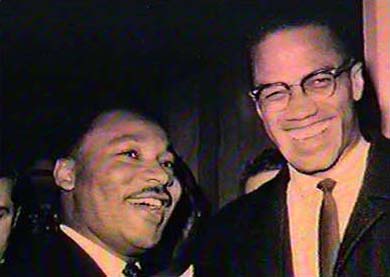A letter I’ve written to Time Out NY in response to a recent article about finding apartments in NYC:
The low-income people of color and immigrants who live in “on-the-verge nabes” (“Apartments 2006,” TONY 552) are being pushed out of these “hot” neighborhoods by a wave of gentrification that TONY seems to be endorsing. The article speaks of neighborhoods like Bushwick being “widely discovered”; however, just as with the “discovery” of the Americas by white Europeans, there are already people there. Your article completely ignores the negative impact that gentrification has on these residents, focusing only on the self-interest of people who can afford the ever-rising rents. While these neighborhoods may seem affordable to some, they are rapidly becoming too expensive for their current residents, who are forced out to make room for the relatively wealthier swarms searching for a good deal.
The “innate charm” of such neighborhoods fades when contrasted with the harsh realities of life for many current residents. Bushwick has some of the highest poverty and unemployment rates in the city, as well as sub-par and landlord-neglected housing. Innate charm, indeed.
The background:
My girlfriend and I subscribe to Time Out NY; I’m not really sure why, given that we barely ever make it to any of the events that they list, nor can we afford to dine at many of the restaurants that they review. It can be good for movie reviews, though. Anyhow – this week’s issue arrived and the cover announced the Apartments 2006 feature; one of the blocks of text read something about giving the scoop on five “on-the-verge” neighborhoods where one could get great deals. Immediately, I knew this couldn’t be good. I flipped open to the article and, lo and behold, those five neighborhoods were much what I expected them to be: East Harlem, Bushwick, Sunset Park, Inwood, and Hunter’s Point. Aside from the last neighborhood (which is in Queens, and I know very little about Queens), I know that all of these areas are populated largely, if not primarily, by low-income people of color, many of whom are Latinos, many of whom are immigrants.
The language used to speak of these neighborhoods was classic, a thorough embracement of gentrification, quite reminiscent of colonialism. Here’s some gems:
About Inwood: “Another gentrification indicator: the emergence of a visible gay population.” Right. Because gentrification by (white) queers is GRRRRRREAT! I mean, they actually speak about gentrification by a “gay population” as a good thing! And, of course, there wasn’t a visible gay population there before, because visibly gay means white and gay, not Latino and gay (unless, you know, there were absolutely no queers living in Inwood before white people moved in.)
About Bushwick: “…or that sit next to hot spots, like Williamsburg’s neighbor to the east, Bushwick (this one’s been widely discovered, so move fast).” Oh yeah, discovered – kind of like america was discovered when the white Europeans arrived, right? Because you can’t fucking discover something if there’s already people there. Back then, it was the Native people who got robbed; now, it’s Latino immigrants who are getting pushed out. Different brown folks, same white folks, same mentality, similar effects.
Also about Bushwick: “By now you’ve surely heard the hype, but even a “Sunday Styles†article can’t spoil this Brooklyn area’s innate charm. Besides the giant lofts that can hold a bunch of friends (and their turntables), there’s more traditional housing stock to be had. Near the Jefferson Street stop on the L, you’ll find industrial infrastructure and family houses—a mix that adds up to a pretty cool vibe (though the area definitely still has dangerous pockets).”
Un-fucking-believable. Has the writer ever been to Bushwick, aside from dashing between one of the L stops and their hipster friends’ lofts – because who else are they talking about with those turntables? Does the writer know anything about Bushwick besides the fact that it’s “cheap” and near Williamsburg? I bet they don’t know these facts about Bushwick, lifted directly from the website of Make the Road By Walking, an awesome organization based in the neighborhood:
- Over 40 percent of Bushwick residents live below the poverty level, and almost 40 percent rely on means-tested government benefits.
- Median family income in Bushwick is less than half the national average while the official unemployment rate in Bushwick is over 10 percent, which is more than double the national rate.
- The percentage of children born into poverty in Bushwick is 75.8 percent, the highest rate in Brooklyn. (as I copied and pasted this statistic I started crying)
- the high school dropout rate in Bushwick is close to 70 percent.
- Sixty-five percent of the community is Latino and almost half of these Latinos are legal permanent residents who cannot vote.
- Bushwick’s housing stock comprises many old and deteriorated buildings, mainly tenements with absentee landlords or tax-foreclosed properties owned by the City. These buildings are contaminated with lead paint, and lead paint violations number 64.4 per thousand children, twice the Brooklyn average.
I lived in Bushwick for two years before moving to my current neighborhood in Brooklyn. And while living there, I agonized about the gentrification that I could see happening around me. Over those two years, I saw more and more white hipsters getting off the L train alongside me and scurrying to and from their lofts. Let me tell you, I saw far more white people within a one block radius of the subway stop than I ever did just a couple more blocks into the neighborhood, as if they were afraid to venture any deeper. And you almost never saw them in the local supermarket right across the street from the lofts, either; most often, they were toting their Whole Foods bags from Manhattan. The more of them I saw getting off at Dekalb over time, the madder I got.
Now, don’t get me wrong: I don’t absolve myself, either. Sure, I’m Latina, as was my roommate at the time. But we were both also college-educated U.S. citizens with white-collar jobs, and no matter what our race or class backgrounds or how little extra money we had, those things made us decidedly more privileged than many of the people in the neighborhood. Our privilege was ultimately most evident in our move out of the neighborhood, both of us to more expensive apartments in “nicer” (read: less poor, lower crime rates, prettier) areas. That’s an option that most of our neighbors didn’t have. Despite the obstacles we face because of our race, our genders, our sexualities, we were both upwardly-mobile in a way that most of our neighbors were not. We left Bushwick for greener pastures; if these folks move out of Bushwick, many of them will have been forced out by rising rents, and many of their destinations will not be any greener.
My roommate and I spent a whole lot of time seething over the very visible evidence of gentrification in our neighborhood. When it’s white folks moving into a primarily POC neighborhood, it can look and feel very much like an invasion, all these white faces popping up where you used to only see brown ones. But we also spent possibly an equal amount of time thinking and talking about our own participation in the gentrification of Bushwick, and how to be more accountable for that culpability. I was as guilty of shopping at Whole Foods as those white hipsters, but I also knew that supporting local businesses was important and tried to shop in the local supermarkets as much as possible. When my white girlfriend moved in with me for a while, I felt intense guilt and inner conflict about basically bringing yet another white person into the neighborhood.
And you know what pissed me off the most? My roommate and I, neither of us being white, neither of us being rich, thought about this shit all the time, and did what little we could about it. But how many of those young white hipsters we saw moving in spent a fucking second worrying about what negative impact they might be having on the community? Did they even have a moment’s hesitation before signing those leases on those “amazingly cheap” lofts they were moving into? Did they try to find out more about their darker-skinned, poorer neighbors, about what they were facing in the neighborhood, about what they could do to somehow help and somehow try to lessen the impact of their own presence? Probably not. That was the kicker. But that’s always the case, isn’t it – people who have less privilege, who experience more oppression on a first-hand basis, are always going to think more, care more, and do more about the oppression of others than folks who don’t experience very much oppression at all.
I know that there are no easy answers here. I know that gentrification seems to sweep across the city like an unstoppable wave. I know that rents in NYC are fucking insane, and that many of those young white folks I saw moving into Bushwick probably don’t have a whole bunch of extra money to spend on rent. But it’s this attitude of entitlement, of selfishness, of ignorance and blindness to what’s happening to people around you, of making up excuses to save a little money – that’s what really pisses me off. I know it can be hard to find affordable housing in NYC. But can you at least try to move somewhere where you won’t be pushing people of color and poor folks out, instead of jumping at the next hot deal? And if you absolutely have to move there, can you at least try to do something to lessen the blow or to work for the people living in the neighborhood? At the very least, can you acknoweldge that you and your ilk are probably screwing a whole lot of people over? Is that too much to ask?



